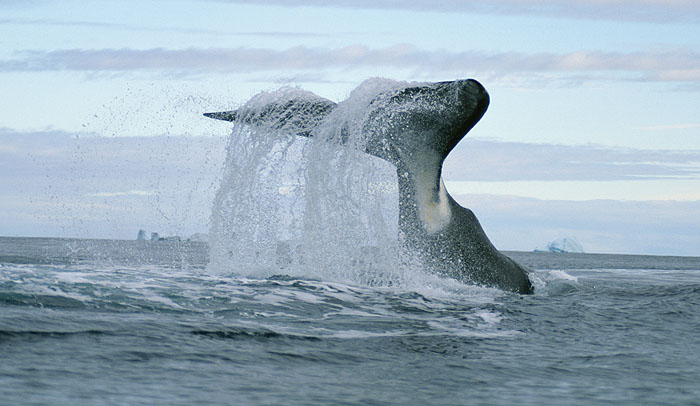Arctic whale specialist Pete Ewins gives us an update on the bowhead whales being tracked by Nunavut Wildlife Management Board and the Department of Fisheries and Oceans, Canada.
The new year started with another impressive map for all the bowheads still with working satellite radio tags, yeah! As the sea ice continues to thicken and extend southwards, the bowhead are concentrating in areas they’re familiar with from previous years, where there’s ample ice movement and large leads (cracks) for breathing.
For anyone that inspects the Canadian Ice Service maps for this region, you’d be forgiven for being a bit puzzled. The area where most of these bowhead whales are this week, just N and NE of Charles Island, just NE of Salluit and Deception Bay, seems to be at the maximum ice cover – 9-10/10ths. Well, that’s right! These whales love to be close to and among the heavy annual sea-ice. Their huge reinforced heads and the rostrum, and lack of a dorsal fin, enable them to break ice a few feet thick if they need to, so that’s how this species has evolved over tens of thousands of years! The 3 bowheads to the east of Iqaluit /Baffin Island are in an area of broken/patchy sea-ice, at the edge of the open water in Davis Strait. All will be well clear of any predatory Killer Whales that may be still hanging around these regions. (Overnight temperatures in Salluit-Hudson Strait region are around -30C now).
Of course we can’t travel to these areas, so we rely heavily on this fabulous technology to beam the locations back to our computers! Beyond simply tracking the whale movements, the aggregated information over a season and then over years helps resource managers and scientists produce a well-informed picture of the key areas used by these magnificent whales as they over-winter. And in the face of increasing industrial development activities (like commercial shipping, oil & gas, and fishing) it is vital to know where these key areas are, and then to put all the measures in place to truly protect them from adverse impacts of human activities, especially in these high risk arctic marine environments.
Learn more about bowhead whales
